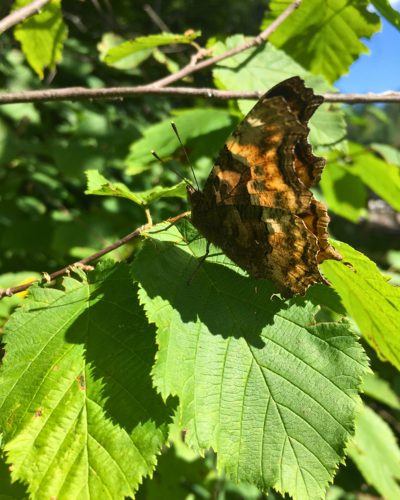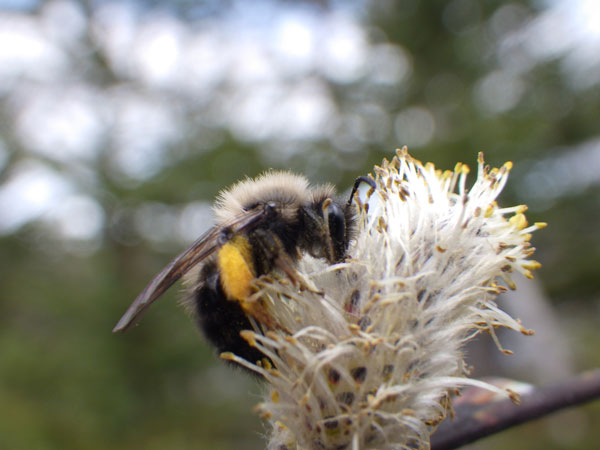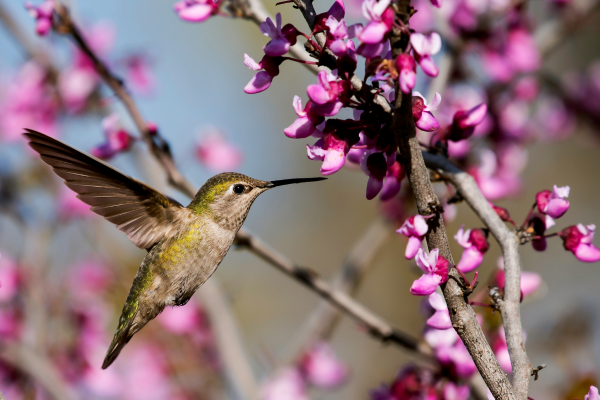Butterflies and Host Plants
What is a host plant? Host plants are specific trees, shrubs or other plants that serve as food sources for caterpillars, the larval stage of butterflies. These plants are vital for butterfly reproduction, as females lay eggs on them and the emerging caterpillars feed exclusively on their leaves. A well-known example is the monarch butterfly, which relies entirely on milkweed species for its larval stage.
There are many butterfly species that are attracted to native plants and shrubs. Here's a list of some common butterfly species and their host plants:
- Eastern Tiger Swallowtails (Papilio glaucus) – tulip trees, cherries, ashes
- Compton Tortoiseshells (Nymphalis l-album) – birches, willows
- White Admirals (Limenitis arthemis ssp. arthemis) – birches, willows, poplars, hawthorns
- Mourning Cloaks (Nymphalis antiopa) – willows, meadowsweets, elms, poplars, hackberries
- Banded Hairstreaks (Satyrium calanus) – oaks, walnuts, hickories
- Viceroys (Limenitis archippus) – willows, poplars, cherries
- Red Admirals (Vanessa atalanta) – elms, hackberries
- Question Marks (Polygonia interrogationis) – elms, hackberries
- Spicebush Swallowtails (Papilio troilus) – spicebush, sassafras, tulip trees
- Hackberry Emperors (Asterocampa celtis) – hackberries
- Tawny Emperors (Asterocampa clyton) – hackberries
- American Snouts (Libytheana carinenta) – hackberries
- Zebra Swallowtails (Eurytides marcellus) – pawpaw trees
The following list are other butterfly species that are rare to our area:
These native plants play a key role in supporting butterfly populations and promoting biodiversity, highlighting the importance of preserving and planting them in our landscapes.

Specialist Bees and Native Shrubs
Bees can be categorized by their foraging habits into two groups: generalists, which gather nectar and pollen from many plant species (both native and non-native), and specialists, which depend on specific plants. Specialist bees evolve to specialize in certain plants because these plants provide the most suitable food sources for them, often offering particular nutrients or conditions needed for their survival. As a result, these bees time their life cycles to coincide with the blooming of their host plants, creating a symbiotic relationship that benefits both. Specialist bee species are more likely to become endangered because they rely on a narrow selection of plant species for food and cannot easily adapt if their host plants disappear.
Some examples of specialist bees in Ontario and their host shrubs include the Bare Dogwood Miner Bee (Andrena integra), which relies exclusively on dogwoods; Clark’s Mining Bee (Andrena clarkella), which is associated with spring-blooming willows; and Bradley’s Mining Bee (Andrena bradleyi), which specializes in blueberries. Planting native shrubs that these bees depend on can significantly boost local pollinator populations and support biodiversity.

Leafcutter Bees and Their Use of Native Trees and Shrubs
Leafcutter bees (Megachile genus) are fascinating pollinators that cut small pieces of leaves and use them to line and seal their nest cells. There are 16 species of leafcutter bees found in the GTA, with the most commonly spotted native species being Flat-tailed Leafcutter Bee (M. mendica), Broad-handed Leafcutter Bee (M. latimanus) and Pugnacious Leafcutter Bee (M. pugnata).
Leafcutter bees prefer leaves that are soft, thin, smooth and flexible, which makes them easier to cut and use for nest construction. Native tree and shrub species commonly used by leafcutter bees include ashes, eastern redbud, dogwoods, pawpaw, maples and oak. Additionally, the leaves from species like basswood, hickories and cherries contain natural antimicrobial properties, helping to protect the bees' nests from disease and decay.
The telltale sign that leafcutter bees are visiting your yard is the presence of small circular cutouts on the leaves of your trees, shrubs and plants. While these cutouts might look alarming, the damage is almost always superficial and does not harm the health of the tree or shrub.
Since leafcutter bees rely on these leaf pieces to build their nests, incorporating these native species into your yard will ensure that critical resources are available for leafcutter bees while contributing to the overall health of your local ecosystem.

Hummingbirds and Their Favorite Nectar Trees and Shrubs
We don’t usually think of birds as pollinators, but the nectar-feeding ruby-throated hummingbird plays a key role in moving pollen from flower to flower while foraging. Hummingbirds are often associated with plants like bee balm, columbine and trumpet vine, but did you know they’re also drawn to native trees? Species such as tulip tree (Liriodendron tulipifera), eastern redbud (Cercis canadensis) and Ohio buckeye (Aesculus glabra) provide rich nectar sources for these fascinating birds.

But nectar isn’t their only food source. Hummingbirds also rely on spiders and small bugs like gnats and aphids for protein. Native trees and shrubs support a diverse range of insect species, which in turn provide essential food for hummingbirds. By planting native species, you can help create a balanced habitat that supports both hummingbirds and the broader ecosystem.
The intricate relationships between native pollinators and native plants underscore the importance of planting trees and shrubs and how interconnected our urban forest truly is. By adding pollinator-friendly native trees and shrubs to your yard, you can help boost #BackyardBiodiversity and contribute to a healthier ecosystem.
Consider applying to the Backyard Tree Planting Program today to plant native trees or shrubs in your own yard. By doing so, you'll be playing an important role in supporting wildlife and enhancing biodiversity in your neighbourhood!
Justin Lewis is the Marketing and Communications Lead at LEAF.
The #BackyardBiodiversity campaign is a partnership initiative with the Toronto Wildlife Centre and is supported by Ontario Power Generation.
LEAF offers a subsidized Backyard Tree Planting Program for private property. The program is supported by the City of Toronto, the Regional Municipality of York, the City of Markham, the Town of Newmarket, the Regional Municipality of Durham, the Town of Ajax, the Township of Brock, the Municipality of Clarington, the City of Oshawa, the City of Pickering, the Township of Scugog, the Town of Whitby and Ontario Power Generation.
